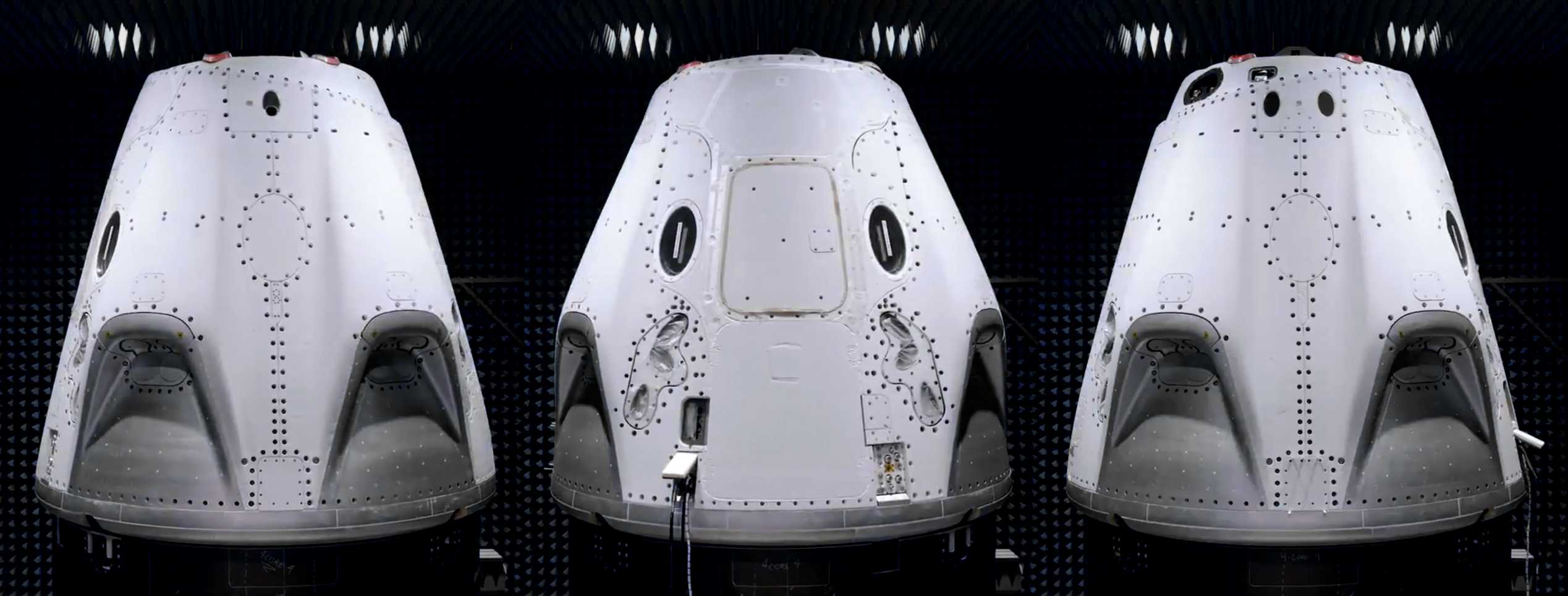
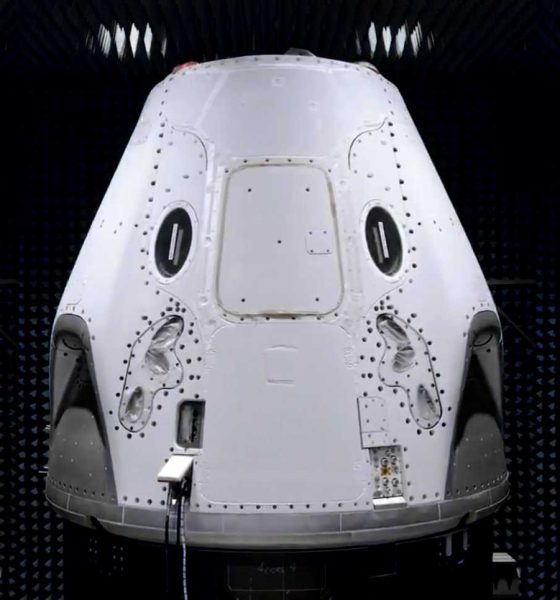
News
SpaceX's first astronaut-ready spaceship wraps up final factory tests before heading to Florida
Set to become the first commercial spacecraft ever to launch NASA astronauts, SpaceX has revealed that its newest Crew Dragon spaceship is in the midst of its final major factory tests, meaning that it could be just a matter of days before it ships to Florida.
Originally built to support SpaceX’s first operational NASA astronaut launch (PCM-1), an explosion that destroyed capsule C201 forced the company to shuffle its fleet and reassign that spacecraft (capsule C206) to an inaugural crewed test flight known as Demo-2. Thankfully, although C201 did explode during post-recovery static fire testing, the spacecraft had flawlessly completed an uncrewed test flight (Demo-1) the month prior, demonstrating a nominal Falcon 9 launch, space station rendezvous, docking, orbital reentry, and splashdown without a single visible hiccup. In short, Crew Dragon’s Demo-1 launch debut could not have gone better.
Around nine months later, having overcome the biggest hurdles posed by capsule C201’s explosion and unrelated parachute failures, SpaceX successfully launched its second finished Crew Dragon capsule – C205 – on a Falcon 9 rocket. That January 19th In-Flight Abort (IFA) test proved that SpaceX’s first human-rated spacecraft can safely whisk astronauts away from Falcon 9 even if it were to fail at the most stressful point of launch. Now, less than a month later, SpaceX’s third finished Crew Dragon spacecraft is nearly ready to head to Florida to begin preparing for the company’s historic astronaut launch debut.
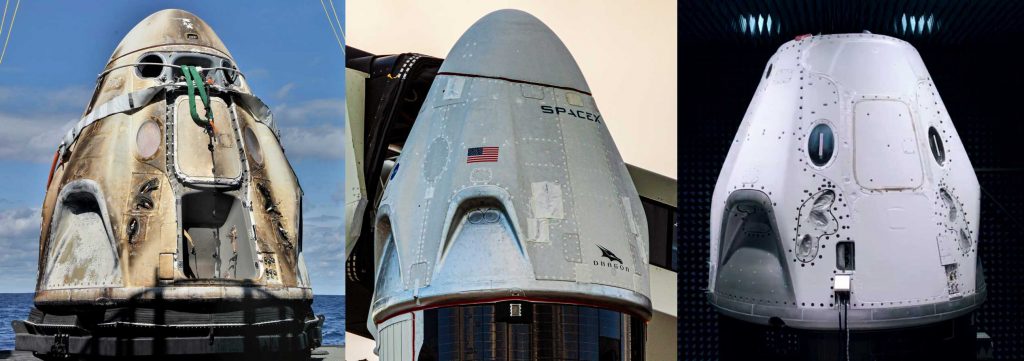
On February 11th, SpaceX released a video showing a 360-degree view of the Demo-2 Crew Dragon spacecraft (C206) inside its Hawthorne, CA factory’s built-in anechoic chamber – used to perform routine electromagnetic interference (EMI) tests. Meant to verify that Crew Dragon is protected from interference that can be caused by internal and external sources of electromagnetic radiation, EMI testing implies that all of the spacecraft’s systems are installed and operational.
Positive EMI test results should mean that Crew Dragon C206 is (more or less) ready to be transported to SpaceX’s Florida processing facilities.
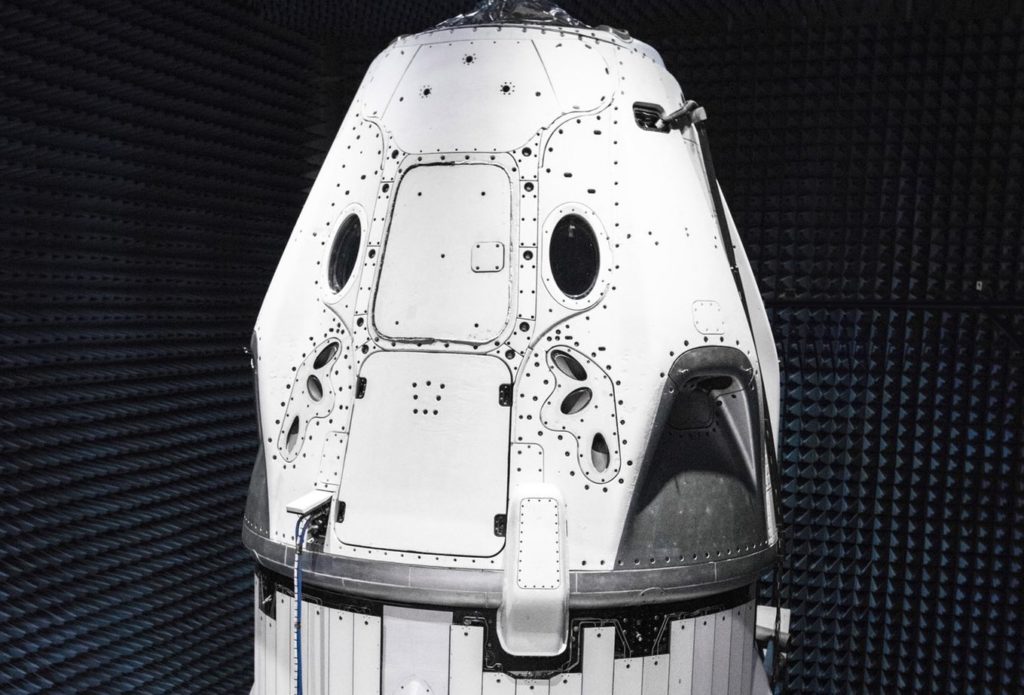
Comprised of a recoverable, reusable crew capsule and an expendable trunk section, the latter part of the Demo-2 Crew Dragon spacecraft is somewhat conspicuously absent in C206’s EMI test video. This seems to imply that its trunk was either tested independently and shipped to Florida beforehand or still needs to be completed, given that EMI testing is generally more effective when performed with a truly complete vehicle.
Crew Dragon’s Demo-2 trunk did appear to be well on its way to completion more than four months ago, so the former explanation is arguably more plausible.
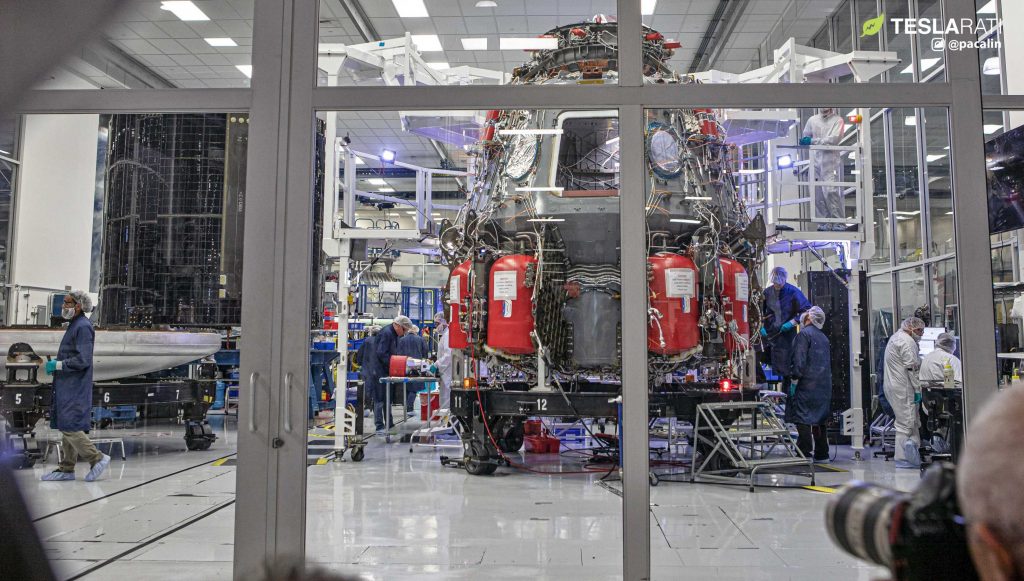
Ultimately, Crew Dragon C206, its Demo-2 trunk section, and Falcon 9’s booster and upper stage are all expected to be at SpaceX’s Florida processing and launch facilities by the end of the month. According to Ars Technica reporter Eric Berger, NASA and SpaceX are working towards a Crew Dragon astronaut launch debut sometime in late-April to late-May and are maintaining a tentative placeholder date on May 7th, 2020.
Looking at past trends, the Crew Dragon spacecraft assigned to SpaceX’s In-Flight Abort test arrived in Florida around the start of October 2019 and was vertical on Falcon 9 and ready for launch by mid-January 2020 — a delta of about 15 weeks. In the interim, SpaceX had to prepare Crew Dragon capsule C205 for an unusual abort thruster static fire test to verify that the fault that destroyed capsule C201 was solved. That test was completed by mid-November. In other words, all things considered equal, SpaceX could technically be ready to launch its first astronauts as few as 6-9 weeks from now – early to late April – if Crew Dragon C206 ships to Cape Canaveral within a week or two.

At the same time, compared to Crew Dragon’s Demo-1 and IFA test flights, Demo-2 will have many more moving parts and much higher consequences at stake. Still, barring any unforeseen problems, it’s starting to look all but certain that Crew Dragon will perform its inaugural astronaut launch before the first half of 2020 is out.
Check out Teslarati’s Marketplace! We offer Tesla accessories, including for the Tesla Cybertruck and Tesla Model 3.

News
Nvidia CEO Jensen Huang explains difference between Tesla FSD and Alpamayo
“Tesla’s FSD stack is completely world-class,” the Nvidia CEO said.

NVIDIA CEO Jensen Huang has offered high praise for Tesla’s Full Self-Driving (FSD) system during a Q&A at CES 2026, calling it “world-class” and “state-of-the-art” in design, training, and performance.
More importantly, he also shared some insights about the key differences between FSD and Nvidia’s recently announced Alpamayo system.
Jensen Huang’s praise for Tesla FSD
Nvidia made headlines at CES following its announcement of Alpamayo, which uses artificial intelligence to accelerate the development of autonomous driving solutions. Due to its focus on AI, many started speculating that Alpamayo would be a direct rival to FSD. This was somewhat addressed by Elon Musk, who predicted that “they will find that it’s easy to get to 99% and then super hard to solve the long tail of the distribution.”
During his Q&A, Nvidia CEO Jensen Huang was asked about the difference between FSD and Alpamayo. His response was extensive:
“Tesla’s FSD stack is completely world-class. They’ve been working on it for quite some time. It’s world-class not only in the number of miles it’s accumulated, but in the way it’s designed, the way they do training, data collection, curation, synthetic data generation, and all of their simulation technologies.
“Of course, the latest generation is end-to-end Full Self-Driving—meaning it’s one large model trained end to end. And so… Elon’s AD system is, in every way, 100% state-of-the-art. I’m really quite impressed by the technology. I have it, and I drive it in our house, and it works incredibly well,” the Nvidia CEO said.
Nvidia’s platform approach vs Tesla’s integration
Huang also stated that Nvidia’s Alpamayo system was built around a fundamentally different philosophy from Tesla’s. Rather than developing self-driving cars itself, Nvidia supplies the full autonomous technology stack for other companies to use.
“Nvidia doesn’t build self-driving cars. We build the full stack so others can,” Huang said, explaining that Nvidia provides separate systems for training, simulation, and in-vehicle computing, all supported by shared software.
He added that customers can adopt as much or as little of the platform as they need, noting that Nvidia works across the industry, including with Tesla on training systems and companies like Waymo, XPeng, and Nuro on vehicle computing.
“So our system is really quite pervasive because we’re a technology platform provider. That’s the primary difference. There’s no question in our mind that, of the billion cars on the road today, in another 10 years’ time, hundreds of millions of them will have great autonomous capability. This is likely one of the largest, fastest-growing technology industries over the next decade.”
He also emphasized Nvidia’s open approach, saying the company open-sources its models and helps partners train their own systems. “We’re not a self-driving car company. We’re enabling the autonomous industry,” Huang said.
Elon Musk
Elon Musk confirms xAI’s purchase of five 380 MW natural gas turbines
The deal, which was confirmed by Musk on X, highlights xAI’s effort to aggressively scale its operations.

xAI, Elon Musk’s artificial intelligence startup, has purchased five additional 380 MW natural gas turbines from South Korea’s Doosan Enerbility to power its growing supercomputer clusters.
The deal, which was confirmed by Musk on X, highlights xAI’s effort to aggressively scale its operations.
xAI’s turbine deal details
News of xAI’s new turbines was shared on social media platform X, with user @SemiAnalysis_ stating that the turbines were produced by South Korea’s Doosan Enerbility. As noted in an Asian Business Daily report, Doosan Enerbility announced last October that it signed a contract to supply two 380 MW gas turbines for a major U.S. tech company. Doosan later noted in December that it secured an order for three more 380 MW gas turbines.
As per the X user, the gas turbines would power an additional 600,000+ GB200 NVL72 equivalent size cluster. This should make xAI’s facilities among the largest in the world. In a reply, Elon Musk confirmed that xAI did purchase the turbines. “True,” Musk wrote in a post on X.
xAI’s ambitions
Recent reports have indicated that xAI closed an upsized $20 billion Series E funding round, exceeding the initial $15 billion target to fuel rapid infrastructure scaling and AI product development. The funding, as per the AI startup, “will accelerate our world-leading infrastructure buildout, enable the rapid development and deployment of transformative AI products.”
The company also teased the rollout of its upcoming frontier AI model. “Looking ahead, Grok 5 is currently in training, and we are focused on launching innovative new consumer and enterprise products that harness the power of Grok, Colossus, and 𝕏 to transform how we live, work, and play,” xAI wrote in a post on its website.
Elon Musk
Elon Musk’s xAI closes upsized $20B Series E funding round
xAI announced the investment round in a post on its official website.

xAI has closed an upsized $20 billion Series E funding round, exceeding the initial $15 billion target to fuel rapid infrastructure scaling and AI product development.
xAI announced the investment round in a post on its official website.
A $20 billion Series E round
As noted by the artificial intelligence startup in its post, the Series E funding round attracted a diverse group of investors, including Valor Equity Partners, Stepstone Group, Fidelity Management & Research Company, Qatar Investment Authority, MGX, and Baron Capital Group, among others.
Strategic partners NVIDIA and Cisco Investments also continued support for building the world’s largest GPU clusters.
As xAI stated, “This financing will accelerate our world-leading infrastructure buildout, enable the rapid development and deployment of transformative AI products reaching billions of users, and fuel groundbreaking research advancing xAI’s core mission: Understanding the Universe.”
xAI’s core mission
Th Series E funding builds on xAI’s previous rounds, powering Grok advancements and massive compute expansions like the Memphis supercluster. The upsized demand reflects growing recognition of xAI’s potential in frontier AI.
xAI also highlighted several of its breakthroughs in 2025, from the buildout of Colossus I and II, which ended with over 1 million H100 GPU equivalents, and the rollout of the Grok 4 Series, Grok Voice, and Grok Imagine, among others. The company also confirmed that work is already underway to train the flagship large language model’s next iteration, Grok 5.
“Looking ahead, Grok 5 is currently in training, and we are focused on launching innovative new consumer and enterprise products that harness the power of Grok, Colossus, and 𝕏 to transform how we live, work, and play,” xAI wrote.








